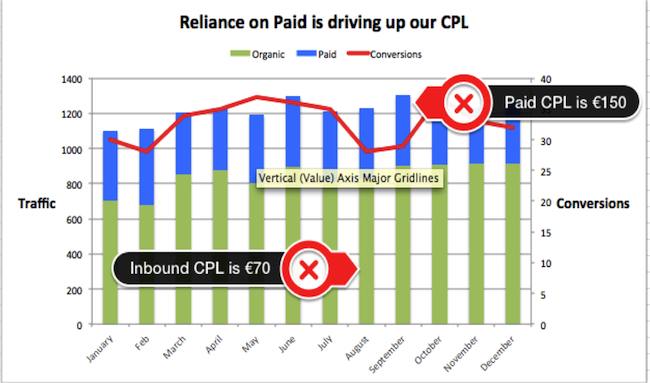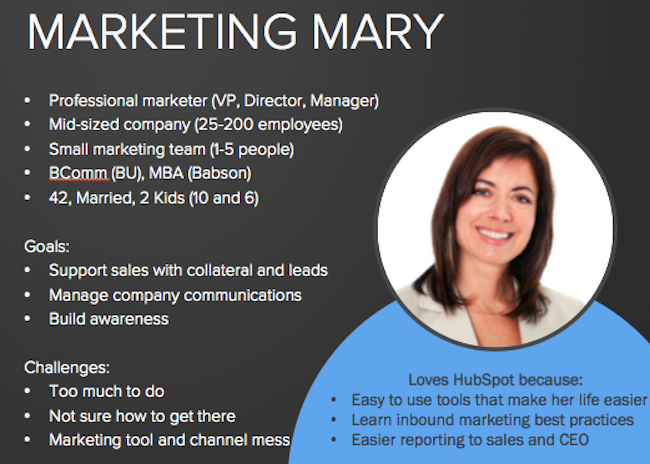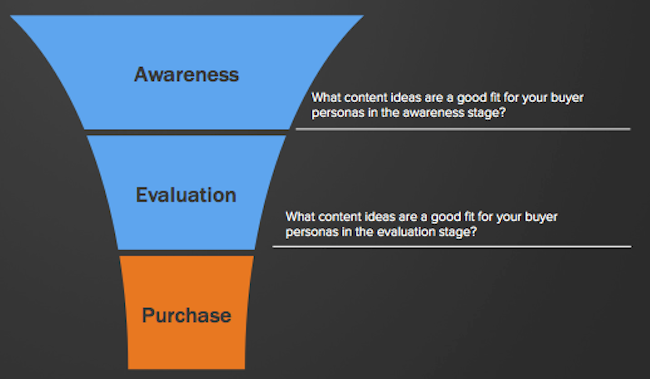With all of this frustration in the day-to-day of content creation, wouldn't it be great if someone would just ... give you a complete blueprint to a successful content strategy? One that helps you generate leads and customers, and win your boss' praise?
Well, HubSpot recently teamed up with Evernote to do just that. We've
created a content marketing blueprint that's available right inside of Evernote. In this post, I'll walk you through the different aspects of the content blueprint and why each facet is so important for marketers to focus on.
How to Develop and Implement a Successful Content Marketing Strategy
Stage 1: Getting Buy-In
All great content marketing plans start with getting people within the company to buy into your vision -- basically, those people who'll give you the resources and/or budget to help make your plans a successful reality.
For example, internal customer-facing teams can share their expertise with you and help fuel your content creation efforts. They'll know who your audience is and what they care about, which comes in handy when you're creating content for that audience.
It's vital to get all of these people bought into your vision. To make this happen you'll need to get really good at pitching. Your pitch should do three things:
1) Talk about key challenges you will solve.
Give an overview of the key challenges your content marketing plan will solve. Marketers often make the mistake of complicating this part with too many data points. Try to summarize your key challenges in just a couple of charts so it's more persuasive and easy-to-digest.
For example, in this chart, our marketer's key challenge is that their overall CPL (cost per lead) is being inflated by the amount of money they are spending to acquire leads through paid programs -- implementing a solid content strategy could reduce the CPL.
2) Talk about how they relate to business metrics.
Always keep your audience in mind. Senior management cares about cost and revenue. How will solving these key challenges help with either of those metrics?
In the example above, the bottom line metric is clear: Reducing the CPL reduces the cost it takes to acquire a customer, which could increase profit down the road.
3) Give high-level details on your strategy to achieve these goals.
Talk through how your content strategy is going to help solve these key challenges and influence those business metrics. It should be really evident that you've thought through your plan and what resources you need to make it a reality.
Stage 2: Developing Your Content Strategy
In a recent
HubSpot report, we found a staggering
56% of survey respondents said they were doing content marketing without a plan. Now it makes sense why some people struggle with content creation: Having a content plan that takes into account key challenges, business goals, and metrics will make you more successful in the long term.
When putting together your content strategy, you should:
1) Include the buyer personas you are targeting.
At HubSpot, we
align content around different buyer personas. This allows us to stay really focused on who we're creating content for. We keep our buyer personas' goals and challenges in mind so we can address these at each stage of the buying process.
For example, this is one of HubSpot's buyer personas, Marketing Mary. You can see we've included key information like her goals, challenges, and why she would love HubSpot. We use this information to create content that's going to be relevant to Mary at each stage of the buying cycle.
2) Understand where the content gaps are in your buying cycle.
Make sure you understand where the content gaps are in the buying cycle for your different buyer personas. To achieve this, you should conduct a content audit. Also, ask yourself if your buyer persona has all the information they need at each point of the buying cycle.
For example, at HubSpot, we create content that attracts Mary to our site and helps her evaluate our software based upon what we know about her goals and challenges. We then ask ourselves if she has everything needed to feel confident in purchasing our product based on those goals and challenges.
3) Come up with content ideas and stick to an editorial calendar.
Once you know your buyer personas and understand what content you don't have to make it easier for them to move through the buying process, it's time to brainstorm content ideas to fill in those holes.
What can be truly difficult is creating and sticking to a consistent publishing schedule. All great content plans have an editorial calendar that people within the company can see what content is being published and what dates that content is going live.
Stage 3: Determining Your Publishing Plan
One of the biggest shifts in marketing today is transforming our mindset from that of a traditional marketer to that of a publisher. Marketers are trained to think in terms of immediate wins. This is why we like spending budget on paid media. We invest a certain amount of spend in return for an approximate number of leads and customers. It can be both predictable and measurable.
Moving to a publisher model means you need to invest more upfront to
start creating content assets that will have a far greater impact over a longer period of time. For example,
the HubSpot blog generates 70% of its monthly lead target from blog posts not published in that month. This is because the content we've created in the past has long-term value for the company in both the leads and customers they generate each month.
A lot of companies talk themselves out of publishing before they even get started due to a lack of immediate resources. The reality is that even a content team of one can be successful -- that is, if they know how to source content effectively. To get really good at publishing, you should:
1) Think about scaling your content by repackaging in several formats.
The average consumer today is connecting with your brand across a range of different channels. When developing a new piece of content, you should always
think about how you can repurpose that content into lots of different formats and channels. For example, if you've developed a series of blog posts, you could turn them into a comprehensive ebook.
2) Make sure the quality of your content always remains high.
Whether you're creating a single piece of content a week or several pieces a day, the quality of your content should always remain extremely high if you want it to pay off in the long run.
Creating an editorial checklist will help you manage this process. With a checklist, you can quickly check each piece of content for quality issues and also educate your team on what it takes to publish content in your company.
In our content blueprint, we have a range of templates that make scaling your content really easy and provided an easy-to-use, ready-made editorial checklist.
Stage 4: Promoting Early and Often
In our aforementioned
report, promotion of content was the number-one priority for marketers in 2014. The question for many marketers has changed from "How can I produce the right content for my audience," to, "How can I distribute that content to the right audience?"
The key for marketers is to increase the number of distribution channels they have (blogs, email, social properties) and grow the number of people they can reach through those channels.
Promotion is a critical part of a content blueprint and something marketers should think about at great length during their planning phase.
To become an expert at promotion, you should:
1) Make it a really important part of the planning process.
When my team is planning out a content campaign, we put as much thought into the distribution of that content as we do into the campaign development. We want to know who that content is for and how can we make sure they get it.
2) Make sure you have people with promotion skills on your team.
Being able to promote content to the right audience isn't an easy job. Over time, the skills to distribute content effectively are going to be a real differentiation between companies that continue to invest in content and those that struggle to make it work for their business.
If you want to learn more on how you can be effective at promoting your content, we have lots of information on outreach, seeding your content, and even the best way to repackage it for different networks to increase its exposure right inside -- you've guessed it --
our content blueprint.
Link to Blue Print -










